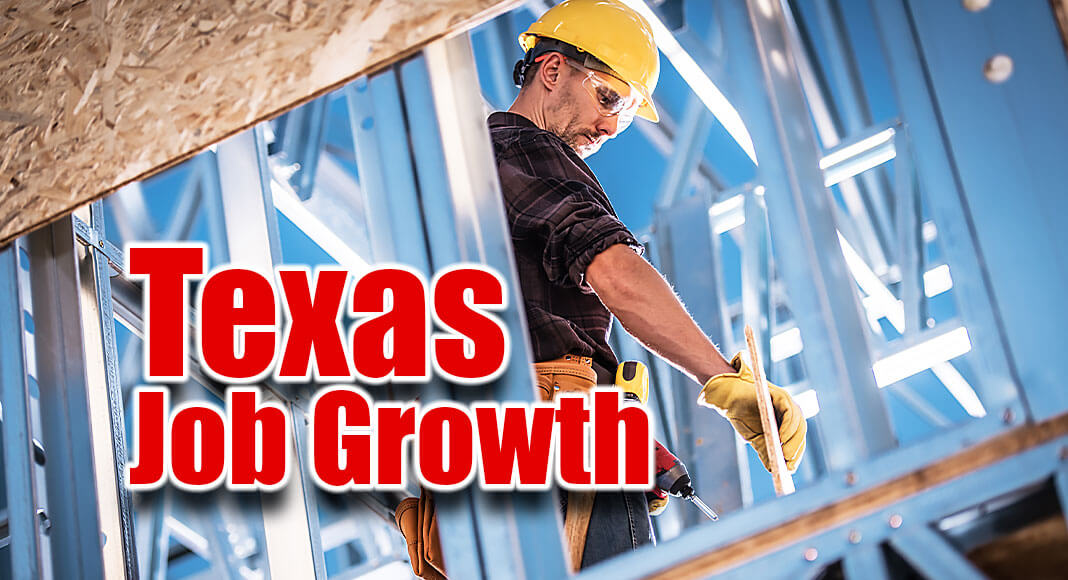
Texas Border Business
May was another solid month for the Texas job market, with the state posting by far the largest gain across the nation (+74,200), well above California (+42,900) and New York (+26,800). Texas was also near the top in percentage increase, an unusual feat for such a large state.
Over the past year, Texas has added 762,400 jobs, and employment is now about 400,000 higher than prior to the pandemic (the US remains about 900,000 behind the previous peak). Not every state is as fortunate, and some continue to shed jobs. In May, employment decreased in Michigan (-14,600), Alaska (-4,400), and Wyoming (-2,800).
Other good news in the Texas jobs numbers is that the gains were spread across both goods-producing and services industries. Particularly strong growth occurred in leisure and hospitality, business and professional services, and construction. Thousands of manufacturing jobs were also added.
The unemployment rate also declined even as the labor force was expanding. More than 14.5 people form the Texas workforce, up nearly 322,000 in the past year. Though unemployment is slightly higher in Texas, the state is in a much healthier position from an economic perspective. In fact, the time required to integrate the influx of workers into jobs is a primary reason for the mildly elevated rate.
The labor force is actually shrinking in places like New York, New Jersey, and Maine, a significant problem in a market where worker shortages are likely to be a long-term concern. Over the past year, for example, the New York City labor force dropped by nearly 118,000, while Dallas-Fort Worth-Arlington has seen gains of approximately that amount. The other large urban centers in the state have also seen impressive workforce expansion.
Looking across Texas, most metropolitan statistical areas (MSAs) are now well above their pre-pandemic employment levels. The greater Austin area is leading the way, with April employment at 108% of the February 2020 total. The Dallas area, Waco, Brownsville-Harlingen, McAllen-Edinburg-Mission, Sherman-Denison, Lubbock, Fort Worth-Arlington-Grapevine, Killeen-Temple, Amarillo, Tyler, greater San Antonio, College Station-Bryan, and Houston areas have all now exceeded pre-pandemic levels.
Several other metro areas are close, including Abilene, El Paso, Laredo, San Angelo, Corpus Christi, Wichita Falls, Victoria, and Longview, all of which exceed 97% of pre-COVID-19 employment. Beaumont-Port Arthur is at more than 94%, with Midland and Odessa both above 90%. Most of the regions which have not yet fully recovered have strong ties to the energy sector, however, and the recent surge in activity will likely be reflected in strong monthly employment gains going forward.
Despite headwinds such as inflation, worker shortages, supply-chain problems, and geopolitical tensions, the Texas economy continues to generate jobs at an impressive pace, and the stage is set for long-term growth. Stay safe!
_________________________________________________________
Dr. M. Ray Perryman is President and Chief Executive Officer of The Perryman Group (www.perrymangroup.com), which has served the needs of over 2,500 clients over the past four decades.















